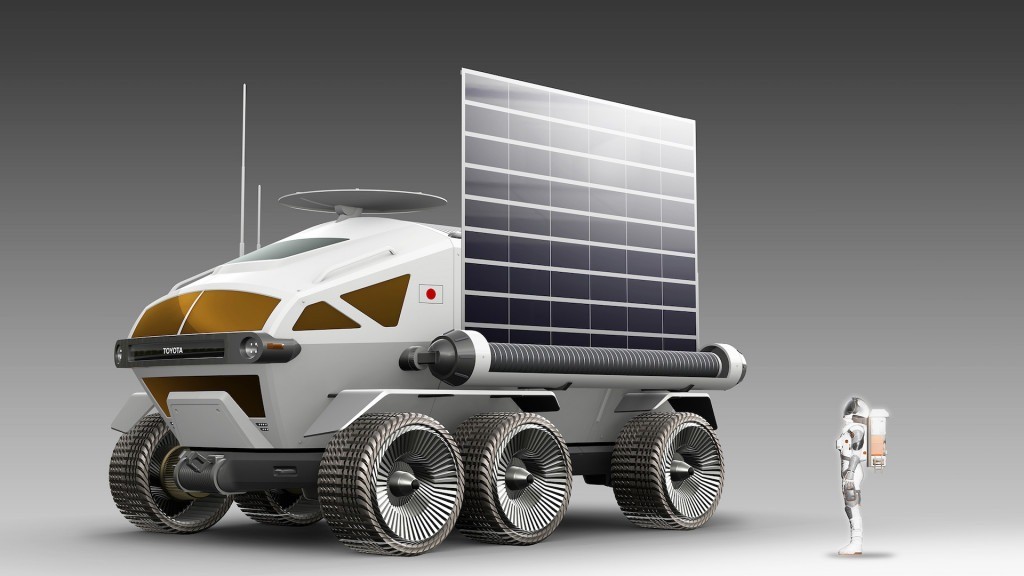Toyota's Hydrogen Lunar Cruiser
So far this is just a rendering, but Toyota plans to work with the Japanese government to build a lunar vehicle for launch by 2029...

Toyota's Hydrogen Lunar Cruiser
- So far this is just a rendering, but Toyota plans to work with the Japanese government to build a lunar vehicle for launch by 2029.
- Hydrogen fuel cells are the answer to long-range moon exploration, according to Toyota.
- This concept is about seven inches longer than a Toyota Tundra double-cab pickup but almost as tall as two Tundras stacked on top of each other.
Toyota gave its lunar vehicle a proper name. The Lunar Cruise, a play on the automaker's Land Cruiser name, will continue its namesake's off-road abilities on the surface of the moon. The engineering and design are slated to be completed in 2024 with a release date of 2029. Its trip to the moon is scheduled for 2030.
Toyota still won't commit to battery-electric cars for a variety of reasons, but this week the company justified itself again with another answer. It's going to the moon, where there are no public charging stations.
Toyota has released its first conceptual images of a hydrogen-powered, six-wheel moon rover it's developing with the Japan Aerospace Exploration Agency, which is the JAXA to our NASA. Cute little carts like the Audi Lunar Quattro, scheduled for a late-2019 launch, and NASA's Opportunity Mars rover, which lasted 15 years on the red planet, are technical marvels of astrophysics. But the images burned into every baby boomer's memory is that of two American astronauts tearing up the dirt in a low-gravity dune buggy, the legendary Lunar Roving Vehicle built in conjunction with General Motors that served in the Apollo 15, 16, and 17 missions. A lunar truck driven by human beings is what gets attention, which is precisely why the Japanese government is counting on Toyota to do what we did in 1971—and do us several times better.
The unnamed "manned pressurized rover" would be able to travel more than 6200 miles for its mission using some combination of stored hydrogen and retractable solar panels for fuel. It would employ 459 cubic feet of living and exploring space for two astronauts, or four in a pinch. Toyota's concept is just seven inches longer than a double-cab Tundra pickup with the 6.5-foot bed, though it's nearly as tall as two Tundras stacked atop each other. At just over 17 feet wide, Toyota's moon rover is 30 percent wider than a U.S. highway lane. On the moon, this ultimate Toyota would merely be a compact.
JAXA plans to launch the Toyota rover in 2029 with plans for moon off-roading "in the 2030s." Everything is a concept at this point, except Toyota's undying commitment to hydrogen fuel cells which now, in Japan anyhow, is a national priority. And who would have thought, with Toyota located an average 238,855 miles away from the lunar surface, that building a more powerful 86 coupe would be the real moonshot.
This content is created and maintained by a third party, and imported onto this page to help users provide their email addresses. You may be able to find more information about this and similar content at piano.io